Labyrinth fish: what are they and how to care for them?
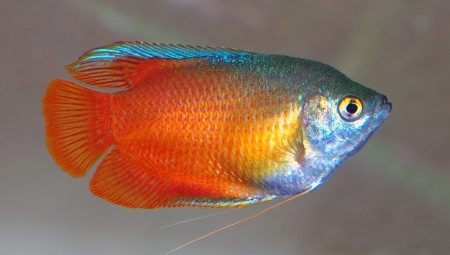
The underwater world is rich and varied. All this wealth is due to different living conditions. Some of the fish live in the salty waters of the oceans and seas, while others prefer fresh lakes or rivers. Some can survive only in the purest running waters, while nature has adapted others to live in muddy, stagnant water. The latter include labyrinth fish. In the process of evolution, they acquired a unique organ that allows them to breathe simple air.
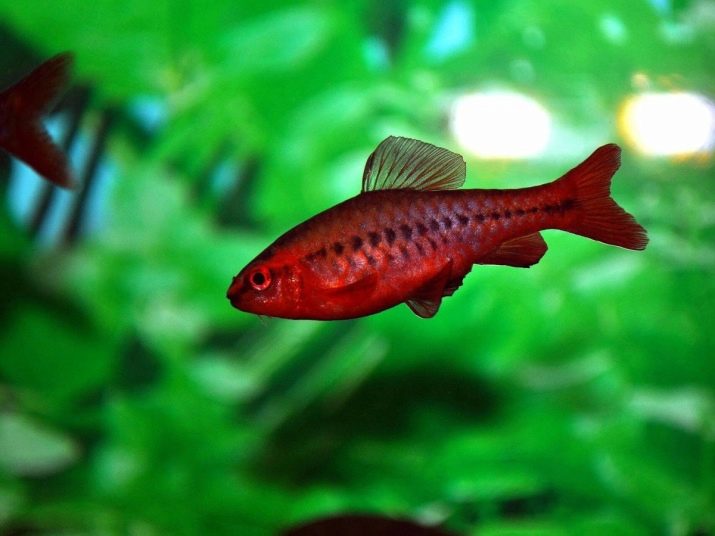
Peculiarities
Ray-finned fish from the order of creepers have a special system of plates permeated with blood vessels in the supragillary region. This organ is called "labyrinth" and serves to absorb atmospheric oxygen.
Labyrinth fish, unlike others, need access to atmospheric air, otherwise they can suffocate.
This feature is caused by the fact that in their natural environment, labyrinth fish live in small, densely overgrown, with a sedentary environment, reservoirs of Asia and Africa.
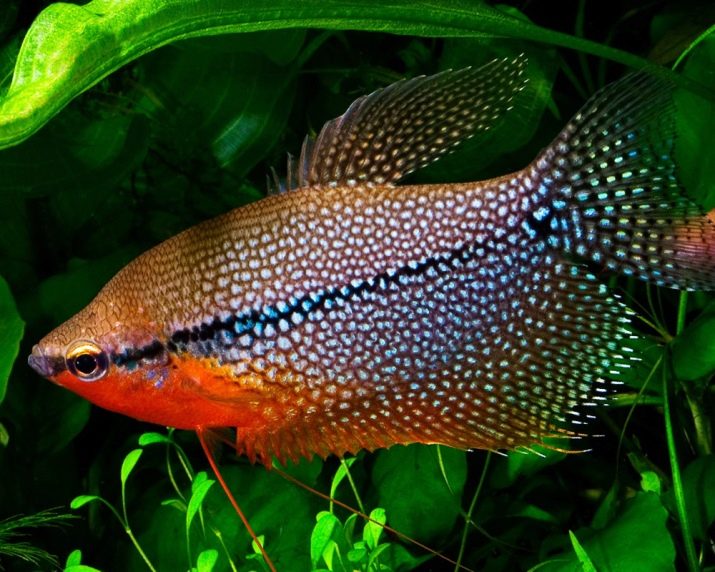
Views
The morphological diversity of Creepers is determined by their habitats. There are three suborders of labyrinth fish:
- Slider or Anabass;
- Chelostomy;
- Macropod or Gouramiaceae.
Creepers
The list of creeping fish includes 33 species, of which only ctenopomas are suitable for keeping in an aquarium.
- Leopard ctenopoma. A fish 15-20 cm long, originally from Central Africa, lives in the basin of the Congo River. The high, laterally flattened body is covered with yellow-brown scales with large dark spots scattered over the body.
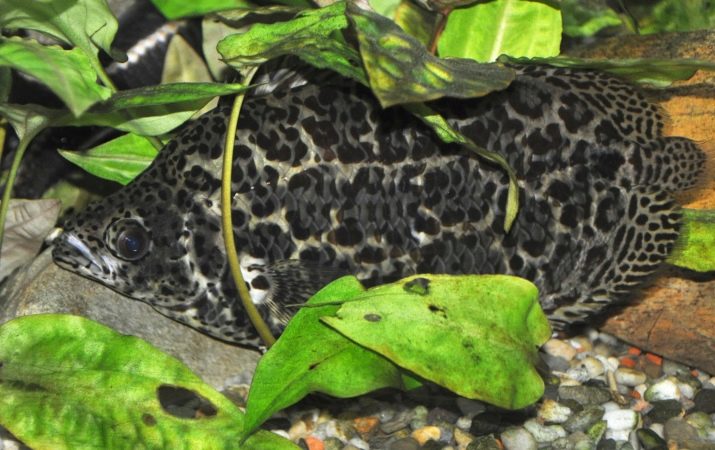
- Ctenopoma Anzorg, unlike leopard, it has a more elongated rounded body up to 7 cm long.The silvery fish is decorated with gold-orange uniform transverse stripes passing to the dorsal and pelvic fins. There are 6 girdle stripes in total. Anzorgi's character is calm.
She spends most of the time in hiding, swimming out to eat.

- Ctenopoma eight-lane... The high body of an 8-centimeter fish, flattened from the sides, is dark brown in color, covered with stripes consisting of spots of different shades. The color of the stripes depends on the conditions of detention. Stripes can be brown, lighter shades than the base color, or blue, including transition colors. An eight-lane ctenopoma is much more aggressive than anzorgi in terms of protecting the territory, so you need to carefully approach the selection of an aquarium.
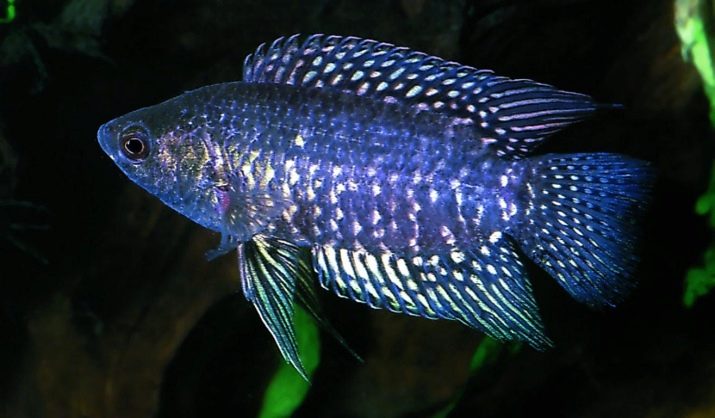
Chelostomy
Kissing gourami are a separate squad of Creepers - Chelostomovs. These fish got their name for a special way of eating, fighting and courting. The elongated mouth of the fish ends in movable "lips" with many horny teeth on the inside, with the help of which the gourami scrape off algae.
During the struggle, the fish interlock with their lips and hold each other until one of them gives up. Mating games take place in the same manner.
Kissing gourami are from Southeast Asia, where they are quite common, inhabiting shallow freshwater bodies with dense vegetation. Growing in their natural environment up to 30 cm, aquarium fish have a maximum body length of 15 cm. The laterally flattened, relatively tall fish kept in the aquarium has only 2 color options - gray and pink.
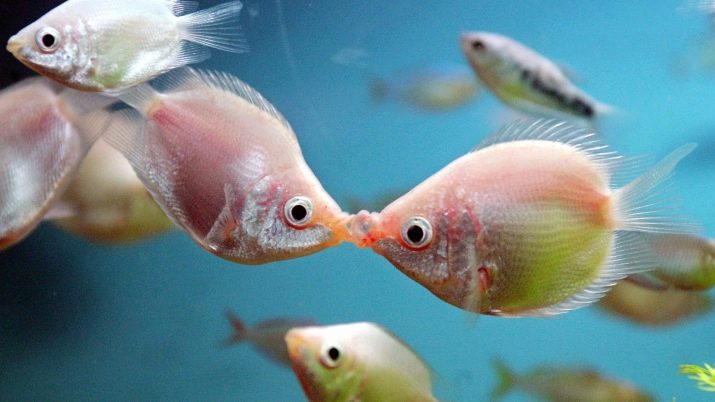
Macropod
Representatives of the Macropodusinae family unite 6 genera. Of these, the most famous fish of the genus Betta or cockerels. Bright fish in their natural environment live in stagnant bodies of water and have a nondescript color with a small veil tail. The luxurious inhabitants of the aquarium are obtained through long-term selection. The character of a small beautiful fish, as the name implies, is fighting. Intraspecific aggression leads to deadly fights, therefore it is better to keep the cockerels one by one.
The next genus Macropodus consists of 5 species of macropods.
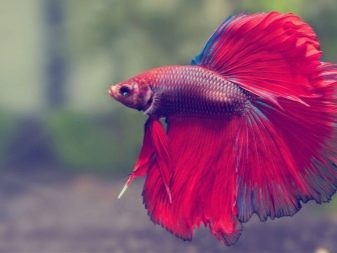
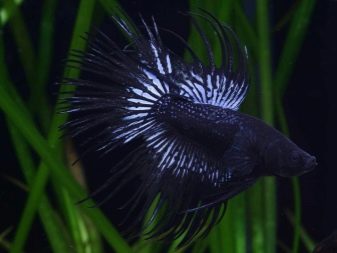
Black, red-backed and common macropods with greenish scales may or may not have red stripes.
The length of an adult fish reaches 12 cm. By their nature, macropods are so aggressive that it is difficult to keep them next to other fish, even of their own species.
Kupanus are small fish 30-50 mm long with an elongated body. The bright fins are decorated with a dark stripe along the edge. Fish are very demanding on the hardness and acidity of the water, so it is better for novice amateurs not to mess with them. The pH and dGh values should be minimal, with the exception of common kupanus.
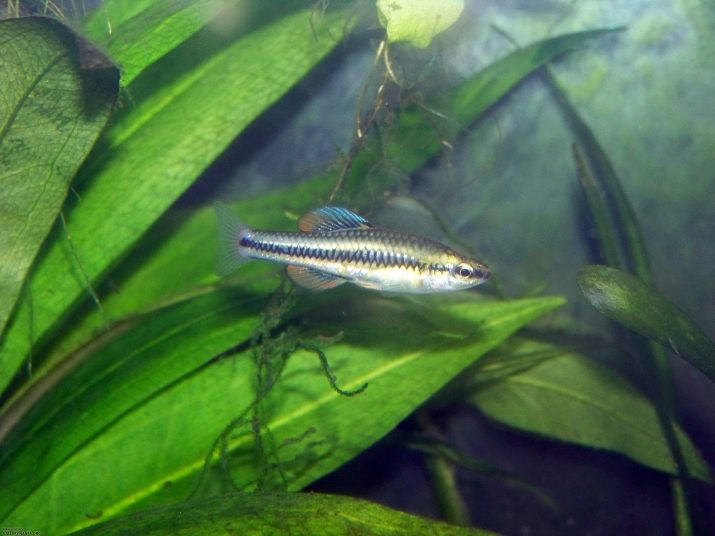
Dwarf gourami the shape of the body resembles fighting fish, only they have shorter fins.
The length of an adult does not exceed 40 mm. Fish live in schools and have a peaceful nature, not suitable for keeping near aggressive species.
The brown body of the fish is covered with medium-sized blue spots and has a red longitudinal stripe from head to tail. The bluish fins have red spots and a border of the same color. The bright blue eyes have a red rim. Interestingly, during mating games, dwarf gourami are able to make rumbling sounds.... Water for such fish requires slightly acidic or neutral.
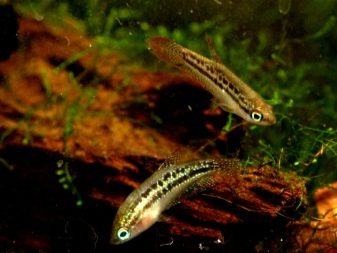
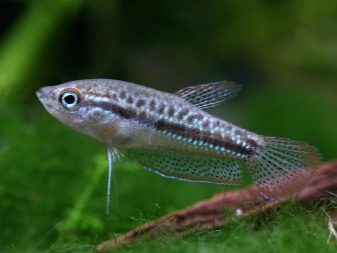
Root gourami or Parosphromenus include 10 genera, but most often contain 2 species of these small peace-loving fish in aquariums.
- Parosfromenus Deisner has a length of 30-45 mm. This is a fish with an elongated beige body, slightly compressed from the sides, decorated with three longitudinal stripes. In the blue pelvic fins, the first ray is elongated. On the dorsal, anal fins and a fan-like tail there are blue, red and dark brown encircling stripes.
A small aquarium without aeration and filtration, densely planted with small-leaved greenery, is suitable for keeping fish.It is important not to forget to leave your fish free swimming space and the opportunity to breathe air.
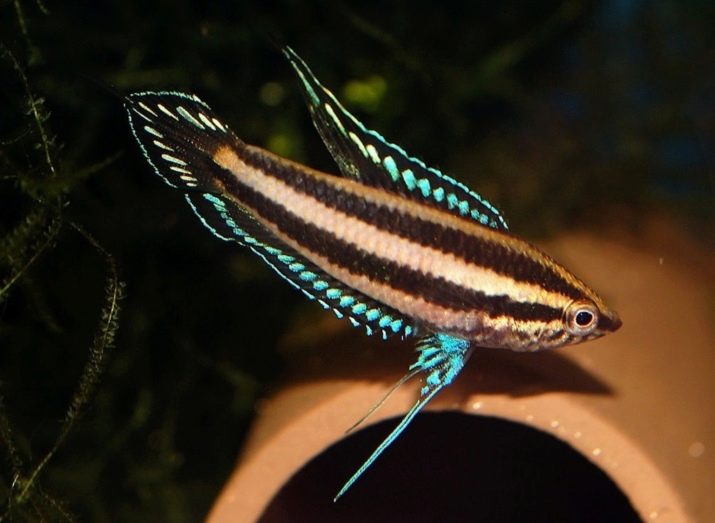
- Needle-tailed paroshomenus in appearance and conditions of detention, it practically does not differ from a dysner. Only his body color is brown with a black tint, and there are two coffee-colored stripes on the sides. The dorsal fin is elongated at the end. There are also golden, dwarf and dark paroshomenus, but they are extremely rare. Malpulutta is represented by the only Malpulutta Kretser species. An extremely shy and very jumping fish up to 70 mm long in its natural environment is on the verge of extinction.
Elongated, slightly flattened from the sides, the fish is colored golden brown and covered with small rare spots.

The dorsal and caudal fins are elongated; in the ventral fins, the first ray is slightly elongated. He loves to hide in shelters, spending a significant part of his time there. It gets along well with other peaceful fish, smaller than her.
The subfamily Luciocephalinae includes the following genera.
Coliseum
Colises or lalius are one of the most popular aquarium fish... They are characterized by filamentary pelvic fins. Most often in aquariums you can find neon, cobalt, rainbow, coral and blue lalius. Fish up to 7 cm long are colored green, yellow or blue with orange spots on their fins.
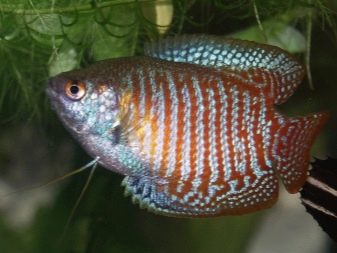
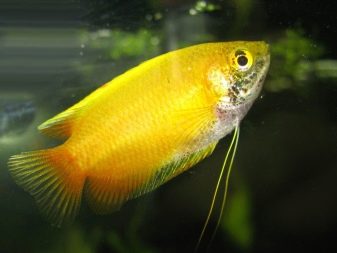
A characteristic feature of lalius is their ability to shoot water at flying insects.
Honey gourami of red-yellow flowers easily gives offspring joint with lalius, therefore, for the purity of the species, you should not keep these two species in the same aquarium. Striped colysus and similar lyabiosis are reddish-brown in color with a bright blue longitudinal stripe. Labioses are red with a stripe and without.
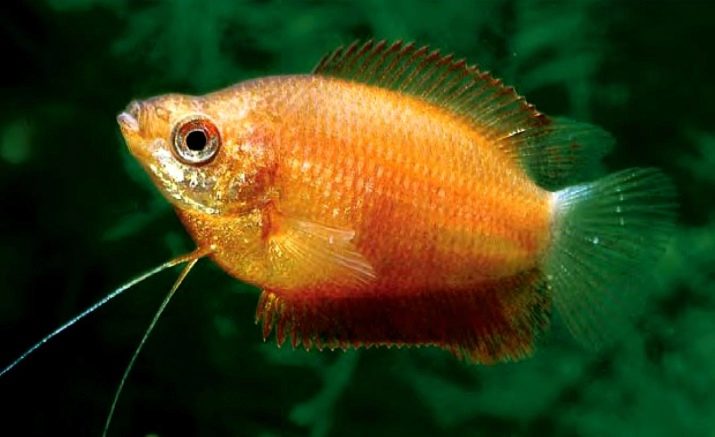
Paraspherichts
Paraspherichts are native to Myanmar. There are only 2 types of paraspheres:
- false chocolate gourami - a fish 19 mm long, chocolate-colored with a green tint and light transverse stripes;
- ocellated parasphericht - yellow fish with brown stains 5 cm long.
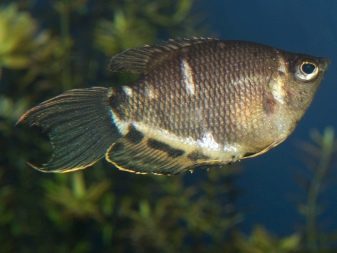
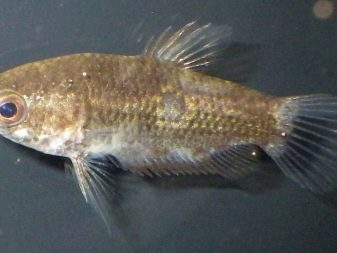
Spherichts
Beautiful and difficult to maintain, chocolate gourami lives in very clean, peat water, the acidity index of which is not higher than 4. But there are also adapted individuals that can live in water with a pH of 6 units.
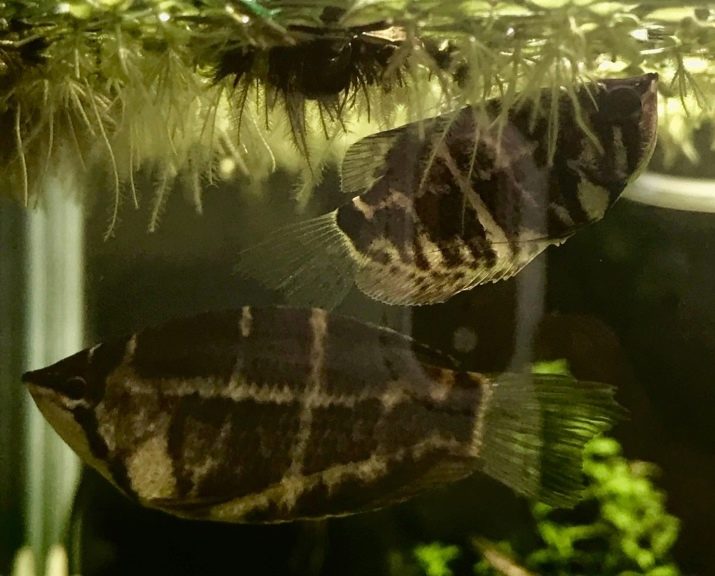
Gourami
One of the most numerous species of aquarium labyrinth fish. Almost all representatives of gourami have a body up to 15 cm long flattened from the sides, decorated with filiform pectoral fins:
- brown or serpentine olive-colored gourami with thin transverse stripes;

- spotted - bluish-gray-olive with a dark spot on each side;
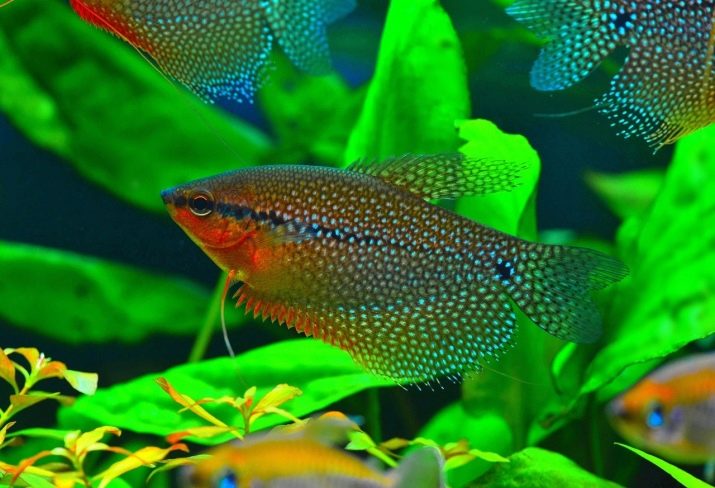
- lunar - silvery with a blue tint;

- pearl - the most famous and beautiful representative of the gourami, its lilac body with a silvery sheen is covered with white specks and a dark, intermittent, longitudinal stripe.
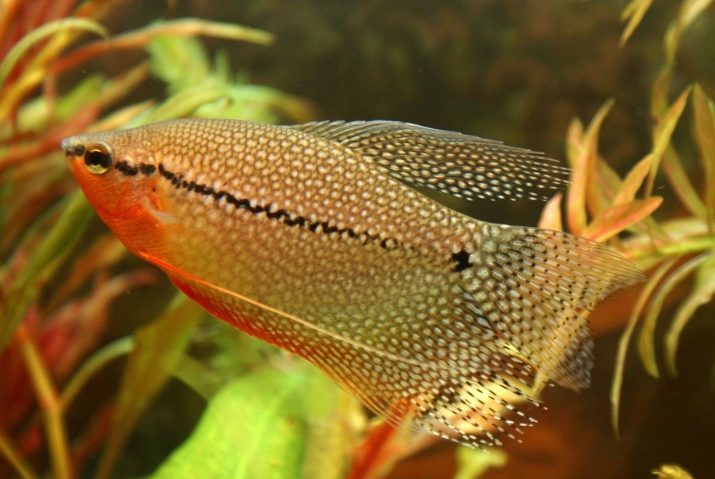
Selection Tips
Those who have been engaged in aquarium hobby for a long time will confidently cope with any capricious individual, but beginners should pay attention to medium-sized representatives of labyrinth fish that do not require special conditions for keeping:
- cockerels;
- lalius;
- marble gourami;
- parospromenus.
These types of fish are not so sensitive to the environment and will get along well in a small aquarium.


Basic rules of content
In their natural environment, labyrinth fish lives in sedentary, turbid water, poor in oxygen, but rich in organic matter. It would seem that they can live in any environment, but most creepers are demanding on the quality of water. If the amount of dissolved oxygen does not play a big role, the following factors have a strong influence.
- Rigidity. Its indicator should not exceed 10 units.
- The pH is less than 6.5. Some species require an even more acidic environment.
Almost all species of these fish are prone to jumping out, so you need to cover the aquarium on top.
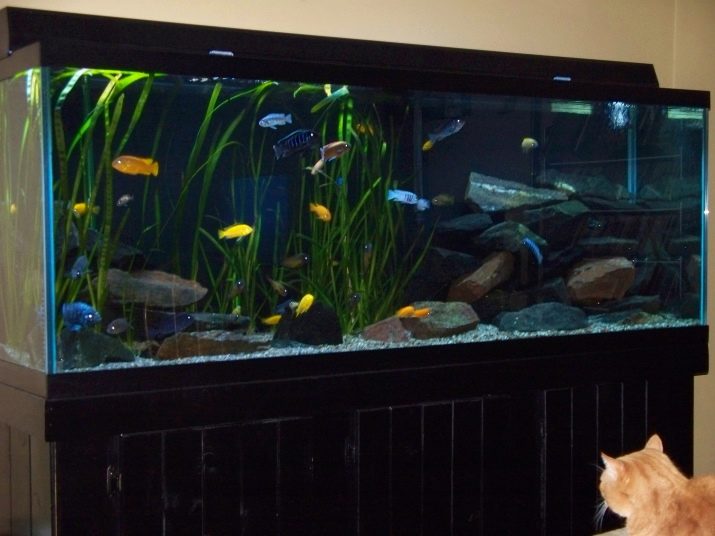
Aquarium care
The house for the labyrinth should be filled with living plants, planted in the ground and floating on the surface, with free space for swimming and breathing air.
The soil is used natural, up to 4 mm in diameter. Snags, shards, coconut shells and other shelters are placed on the bottom.
Although creeping fish can live in stagnant water, it is better to replace some of the old liquid with fresh one in a volume of up to 20% once a week. Additional aeration is practically not required, but it is best used in larger aquariums.
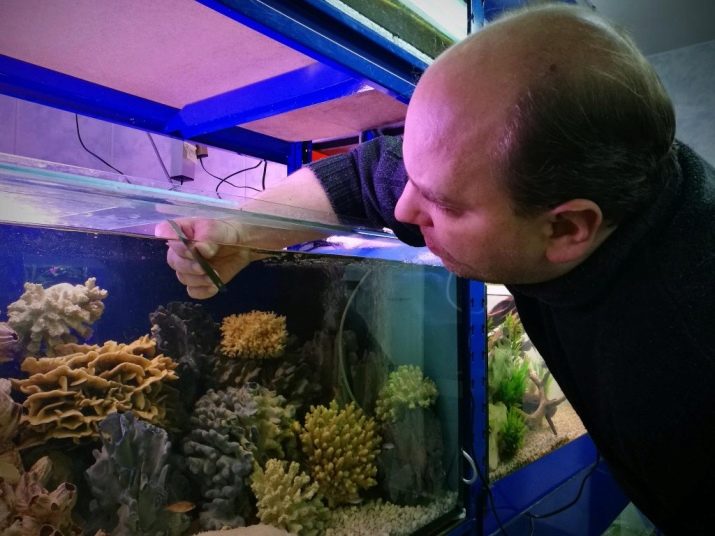
What to feed?
Any food is suitable for feeding labyrinth fish: dry, live and frozen. They feed the fish by spraying the food on the surface, as they eat at all levels of the aquarium.
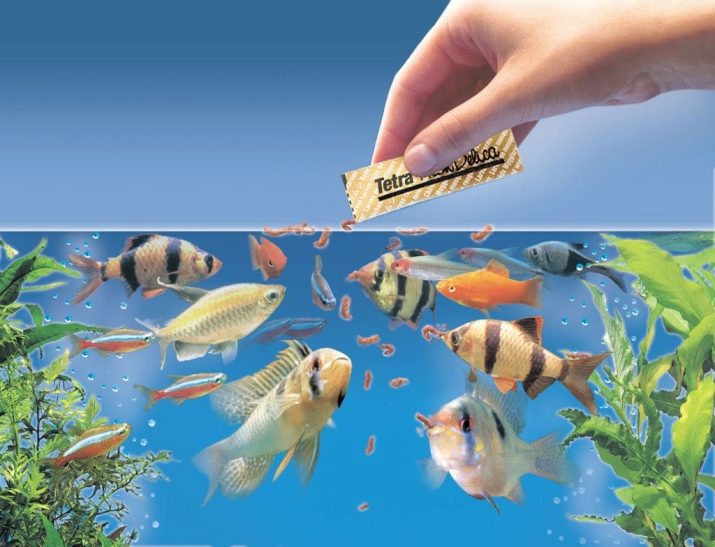
Breeding
Reproduction of labyrinth fish depends on water parameters. For the female to lay eggs, very soft and acidified water is needed.... Many of the creepers build foam nests where fertilized eggs and hatched larvae are hidden.
Nests of each species are special, not similar to others.
Some fish use pieces of plants for a nest, others simply attach it under a leaf, and in others it floats freely.
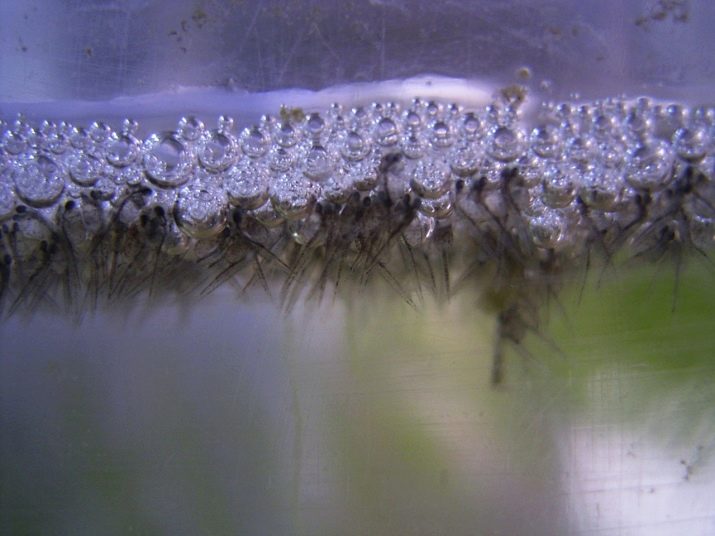
Compatibility with other fish
Non-aggressive species of labyrinth fish easily get along in the same aquarium with other peaceful species of suitable size:
- swordtails;
- guppy;
- zebrafish;
- platies;
- catfish and others, similar in character.
Do not colonize labyrinths with species prone to tearing off veils, such as barbs or cichlids. Large predatory fish also pose a threat to labyrinths.
For the types of labyrinth fish, see below.








